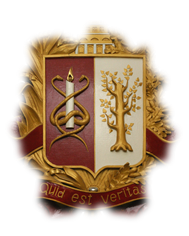Issue: 2016, Vol. 21, No. 1
THE EFFICACY OF VARIOUS SCHEMES OF REHABILITATION MEASURES IN PATIENTS AFTER PRIMARY HIP REPLACEMENT
- Keywords
- rehabilitation, primary hip joint prosthetics, late postoperative period, risk factors
- Abstarct
- Objective - to estimate the efficacy of various schemes of rehabilitation measures in patients after primary hip joint prosthetics in dependence on the presence of risk factors for postoperative complications appearance after discharge from the hospital. Materials and methods. 282 patients aged 48-73 years were examined. In dependence on the risk factors presence all subjects were divided into 3 groups: I group with standard treatment, II group - with conditionally standard treatment, III group - with non-standard medical treatment. I group was subdivided into subgroup A - with unload concomitant pathology and subgroup B - with load concomitant pathology. The efficacy of both schemes of rehabilitation measures was investigated. In first case rehabilitation was performed within first 14-18 days after endoprosthetics at in-patient department, after discharge from the hospital - at out-patient department. In second case patients were treated by 3-week rehabilitation program at in-patient department in 14-18 days after discharge from the hospital and then - at the local polyclinic. In 12 months the intensity of painful syndrome, functional status of the muscles which stabilized hip joint, stabilometric investigation data and interference electromyography in hip quadricepts and hip abduction muscles data were evaluated. Hip joint complex functional estimation was made by Harris scale. Results. Clinical evaluation of muscle restoration demonstrated that combined rehabilitation scheme for the operated hip joint in patients from I and II groups showed the best results. Interference electromyography data were analyzed and demonstrated the diminishment of asymmetry in the muscle functioning; the best results were received in I group and there were no statistically significant differences between rehabilitation schemes; the com- bined rehabilitation scheme showed the best significant results in II and III groups. The stabilograms testified to the fact that length, square and speed of pressure center were recovered more rapidly in IB, II and III groups by combined rehabilitation scheme. Conclusions. The authors did not reveal significant differences between treatment schemes in late postoperative period in patients with the least risk factors for postoperative complications but such differences were statistically significant in the groups with risk factors presence.


 Кирпичев
Кирпичев